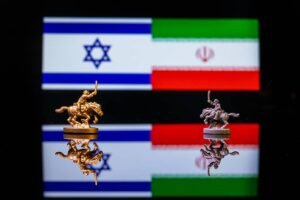The history of the Middle East is vast and complex, with a rich tapestry of civilizations, cultures, and conflicts. Here’s a brief overview of key periods and events in Middle Eastern history:
1. **Ancient Civilizations:**
– The Middle East, often referred to as the “Cradle of Civilization,” is home to some of the world’s earliest civilizations. Mesopotamia, located between the Tigris and Euphrates rivers, was the birthplace of Sumerian, Babylonian, and Assyrian civilizations. Egypt, along the Nile River, was another major ancient civilization.
2. **Persian Empire:**
– The Achaemenid Empire, led by Cyrus the Great, emerged in the 6th century BCE and became one of the largest empires in history. Darius I expanded the empire to include parts of present-day Turkey, Egypt, and Greece.
3. **Hellenistic and Roman Periods:**
– After the conquests of Alexander the Great in the 4th century BCE, the Hellenistic period saw the spread of Greek influence across the region. Later, the Roman Empire controlled parts of the Middle East, including Judea.
4. **Byzantine and Sassanian Empires:**
– The Roman Empire split into the Eastern Roman Empire (Byzantine Empire) and the Western Roman Empire. The Sassanian Empire in Persia emerged as a powerful force, engaging in conflicts with the Byzantines.
5. **Islamic Conquests:**
– In the 7th century, the Arab armies, led by Prophet Muhammad’s successors (caliphs), undertook rapid expansion, conquering Persia, the Byzantine Empire, and parts of North Africa. The Islamic Caliphate became a dominant political and cultural force.
6. **Golden Age of Islam:**
– The Islamic Golden Age (8th to 14th centuries) witnessed significant advancements in science, medicine, philosophy, and the arts. Cities like Baghdad, Cairo, and Cordoba became centers of learning and culture.
7. **Crusades:**
– In the 11th to 13th centuries, a series of Crusades were launched by European Christians to capture the Holy Land from Muslim control. The Crusaders established short-lived states in the region.
8. **Ottoman Empire:**
– The Ottoman Empire, founded in the 14th century, became a powerful Muslim state that controlled much of the Middle East, southeastern Europe, and North Africa. It lasted until the end of World War I.
9. **World War I and the End of the Ottoman Empire:**
– The Ottoman Empire sided with the Central Powers during World War I and ultimately collapsed. The Sykes-Picot Agreement (1916) and the Balfour Declaration (1917) played pivotal roles in shaping the post-war Middle East.
10. **Mandate Period and Formation of States:**
– After World War I, the League of Nations granted mandates to European powers, leading to the establishment of modern nation-states in the Middle East, including Iraq, Jordan, Lebanon, and Syria.
11. **Israeli-Palestinian Conflict:**
– The establishment of the state of Israel in 1948 led to ongoing conflicts with the Arab states and the displacement of Palestinian refugees. The Israeli-Palestinian conflict remains a major geopolitical issue in the region.
12. **Modern Political Dynamics:**
– The Middle East has experienced numerous conflicts, revolutions, and changes in leadership in the 20th and 21st centuries. Issues such as the Iran-Iraq War, Gulf Wars, Arab Spring, and ongoing conflicts in Syria and Yemen have shaped the region’s contemporary history.
It’s important to note that the Middle East is a diverse region with multiple ethnicities, languages, and religions, contributing to its complex history and contemporary geopolitical challenges.









